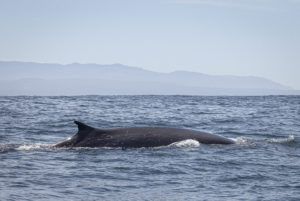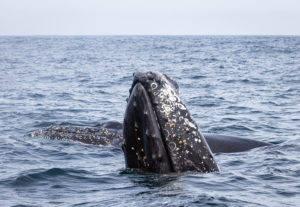Marine biology is the study of the biology of marine life and organisms in the sea. Given that in biology many species live in the sea and others live on land like crabs and sand fleas, marine biology classifies species based on the environment rather than on the type of species.
One group of species that live in the marine environment are cetaceans. Cetaceans are a group that consists of whales, dolphins and porpoises and within this group, there are around 90 species. Species are still being discovered and unfortunately, species are going extinct like the Yangtze River dolphin that went extinct in 2007. This shows how important it is that we protect these animals and do all that we can to conserve their environment.
In the UK, around one-third of all cetacean species have been recorded, including some of the most interesting in the world. We have common dolphins, bottlenose dolphins, Risso’s dolphins, minke whales, fin whales and even the largest whale in the world has been recorded here, the blue whale. All these animals produce sound, you may have heard the infamous whale song, produced by humpback whales that is used to communicate over great distances. Cetaceans use sound to communicate but they also use it in some ingenious ways.
 Image: Fin whale
Image: Fin whale
Some species of cetacean feed on fish and squid, and in some cases, they are foraging in murky or dark waters, so they can’t rely on vision alone. They use hearing, sound travels through sea water five times faster than in air because the sound waves can move through the saltwater molecules more quickly. They emit a high-frequency sound (sonar) to locate prey species underwater, the sound or pressure wave then vibrates off a fish, and they can detect this. They can then locate the prey and determine how far away it is. In doing so, they can snap it up straight away and get a great meal, full of protein and fats.
This method of using sound underwater means that cetaceans are sensitive to sounds, as they are using them to communicate and forage. There are many natural or ‘ambient’ sounds in the ocean such as rain, storms, earthquakes and other sound-producing animals. Humans also introduce sound into the environment through activities like shipping, sonar, construction and much more.
 Image: Humpback whale
Image: Humpback whale
The UK is now going through a green industrial revolution and aiming for net zero. This means we are making more renewable energy generation than ever before so we can reduce our carbon emissions as a country, which is a fantastic thing. However, it does mean we are working on more infrastructure out at sea, e.g offshore wind farms. I investigate and assess whether construction at sea is likely to influence a cetacean, how big the impact may be, and suggest any techniques we can use to reduce the impact.
My assessments begin by describing the species in the area, one that is present all over the UK is the harbour porpoise (Phocoena phocoena). Harbour porpoises are the most frequently sighted cetacean species here in the UK and are one of the cetacean species most sensitive to sound. This is because they produce a very high-frequency sound meaning that a lot of our machinery is in their hearing range and can therefore affect their activities. One of these activities is foraging, if an animal must leave an area where there is lots of food to a prey-poor area because of noise we produced, this could have great consequences for the individuals as it may require more energy, for less food.
So, how do we protect them in this ever-noisier environment then? There are several ways we can do this. One of the widely used methods is to employ marine mammal observers (MMOs) on board vessels to conduct watches for marine mammals, of which cetaceans are part of. The MMOs will start watches before any sound-producing activities and ensure there are no animals in the area. A ramp-up procedure will then take place; this means the sound is introduced to the environment with the volume increasing gradually. This gives animals a chance to vacate the area safely. The MMO will monitor several activities and spends a lot of time at sea.
Another method is to use an underwater microphone, a hydrophone, to listen out for them. We would pop the hydrophone in the water and monitor for marine mammals, similarly to the MMO but this is by a passive acoustic monitoring operator (PAMO). This involves looking at a computer screen and being able to detect cetacean signals. If an MMO or PAMO records a marine mammal before an activity, it is delayed until they have left the area, in some parts of the world the activity is completely shut down if an animal is detected at any point in the survey.
Other ways to reduce the sound travelling are called noise abatement solutions. These help to contain the noise. A way to do this is to surround the noisy activity, for example hammering a turbine mast into the seafloor, with a tube full of holes. What on earth is that for you might say? Well, if you blast lots of air through the tube it creates an air-bubble curtain, and this surrounds the activity. In turn, it helps keep the noise inside the curtain and stops it from travelling out into the wider environment, therefore, it helps protect marine animals, including our cetaceans from the noise.
Cetaceans are fascinating, and we have so many great species in the UK. With this diversity, we need to be careful with all the new developments in the marine environment, including all the renewable projects. There are many ways we help protect these animals and many ways we are still testing. It is very important that we do all we can to protect these animals and as they sit at the top of the food chain, they are great indicators of ocean health. To help protect these animals we combine biology, physics and technology and a team of people to share ideas and provide knowledge.
Download PDF
If you wish to save, or print, this article please use this pdf version »


